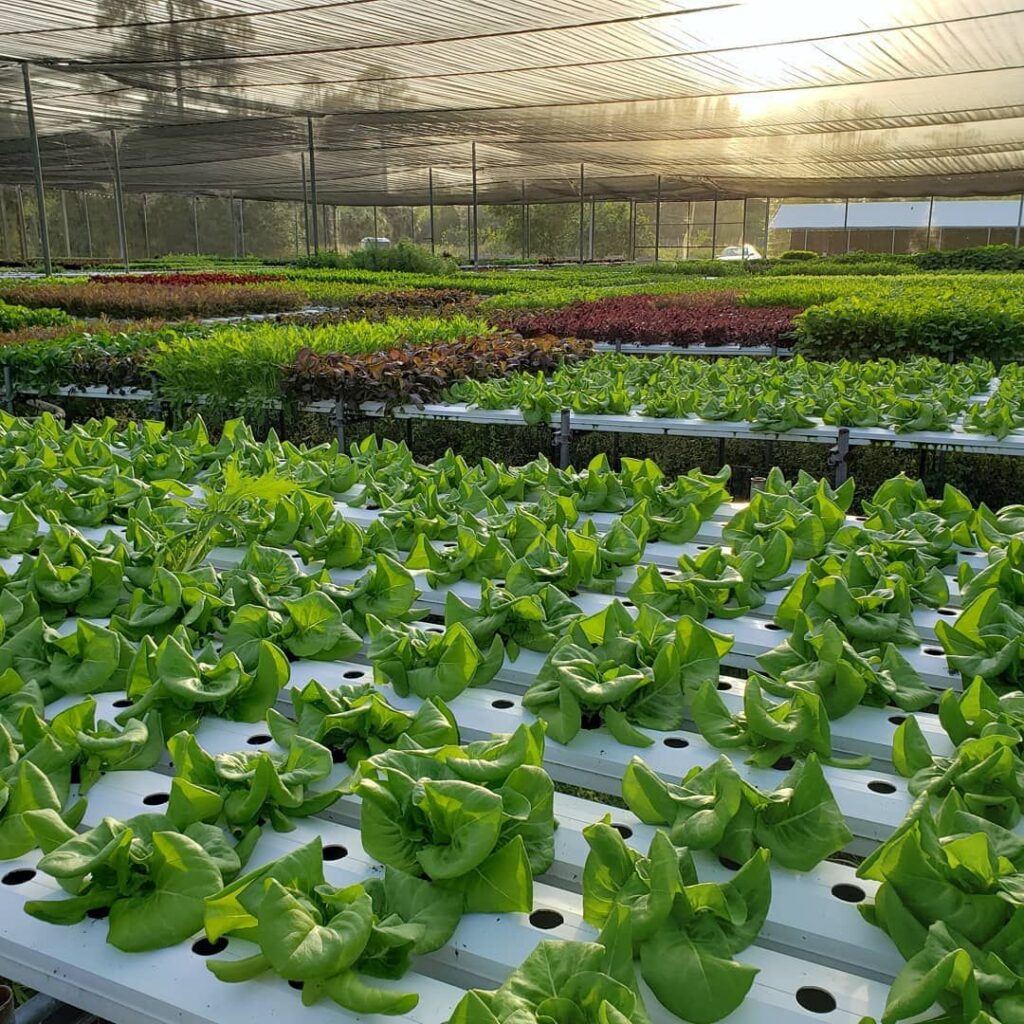By Charmaine Peters

Did you know that the average American consumes more than 12 pounds of lettuce every year? Whether it’s crisp and bright like romaine or iceberg, or dark and leafy like kale and arugula, lettuce is a staple in every household. In Florida, lettuce production contributes to 3% of the national total, with most of the crop cultivated across approximately 11,000 acres within South Florida’s Everglades Agricultural Area (EAA).
South Florida’s sunny climate and subtropical vibes make it an ideal location for gardening vegetables, like lettuce. However, when it comes to growing this cool-weather crop in the heat and humidity of the region, some special attention is required to ensure a successful harvest. Here are some tips to guide you through successfully cultivating fresh and crispy lettuce directly from your backyard:
Select a Heat-Tolerant Lettuce Variety
Consider planting heat-tolerant lettuce varieties like Romaine, Butterhead, and Summer Crisp. Romaine and Summer Crisp are relatively heat tolerant, while Butterhead is moderately heat tolerant. Romaine can withstand moderately warm temperatures but can bolt, which means it may produce flowers that may develop a bitter taste when exposed to high or prolonged heat. Summer Crisp can also withstand higher temperatures without bolting or becoming bitter as quickly as some other lettuce types. Butterhead is known for being among the most heat-tolerant and bolt-resistant of all the lettuce types. When buying seeds, check the information and look for the label to say “heat resistant” or “heat tolerant” to ensure that your lettuce can thrive.
Prepare Your Garden
Select a partially shady location to shield the lettuce from too much sun. The ideal soil pH range for lettuce is 6.5 and 7.0, but since the soil pH in South Florida ranges from 7.0 to 8.5, as such you need to change your soil pH by bringing in topsoil or a soil mix or by simply applying organic materials to the soil like dried stalks or leaves, compost, and cover crops. Then, wait for three to six weeks before planting. This waiting period will allow pH levels to stabilize. To check your soil pH, you can contact your local county UF/IFAS Extension office for soil sample bags, shipping boxes, and sample submission forms free of charge. You may also send your soil sample to a lab using a soil testing kit and get accurate results quickly.
Choose Your Timing
The best time to plant lettuce in South Florida is during the cool season, which is September through January. When planting, barely cover the seed with soil about ¼-inch deep because lettuce seeds require light to germinate. Water the seeds after planting, and make sure to keep the soil moist. Lettuce plants have shallow roots, so they need frequent watering (at least once daily). As the seeds germinate, thin out the plants 4-inches apart for leaf lettuce like Summer Crisp, and 6-8-inches apart for Romaine and Butterhead. This means you’ll need to remove or transplant some of the plants to ensure that there is enough space between each plant. Proper spacing will give plants enough room to grow and more quickly access resources like sunlight, water, and nutrients. Apply fertilizer every 3 to 4 weeks, and regularly inspect for signs of pests and decline, such as yellowing leaves or holes. If this is spotted, remove the plant from your garden as soon as possible to prevent spreading.
Routinely Harvest Lettuce
Lettuce plants grow quickly and mature in 30 days, but you can decide when to harvest as soon as they reach the size you want. To harvest, cut the leaves from the plant and leave the base of the plant intact. This will allow the plant to continue growing and producing leaves so that you have a non-stop, abundant supply of fresh greens.
Growing lettuce in South Florida may have its unique challenges, but the rewards of enjoying fresh, homegrown, lettuce make it all worthwhile. With careful attention and the right practices, you can successfully cultivate a thriving lettuce garden in your own backyard!

